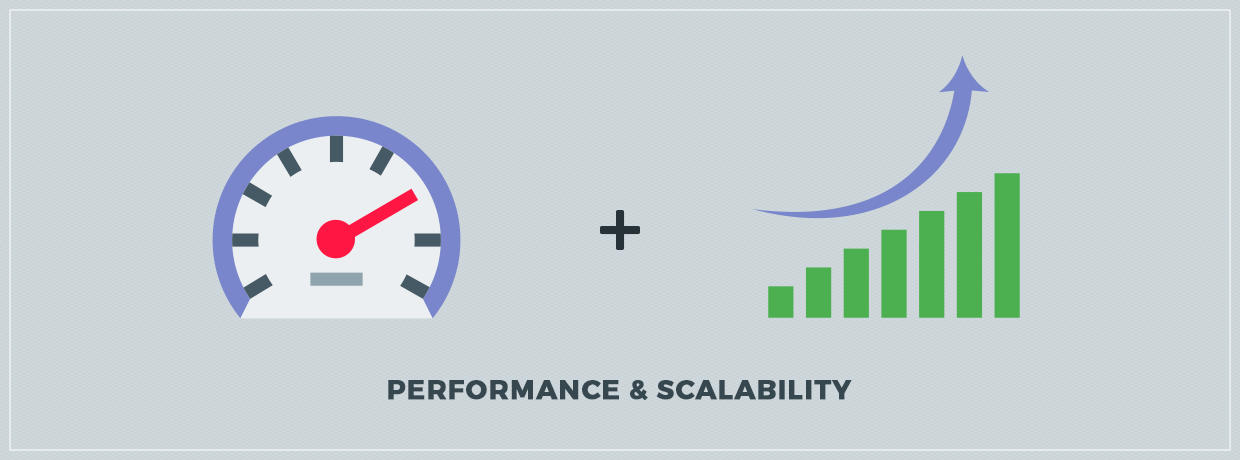BPM is supposed to make processes more efficient, but users quickly lose patience and look for workarounds when your business process management software lags or has a delayed response time. When your BPM tool frustrates your users, it becomes more of a liability than a benefit.
Even if a BPM solution brags that it has all the cutting-edge features, its real test begins when it has to manage mounting volumes of data. Software behaves very different with 100 users as opposed to 1 million.

When evaluating the best BPM software for your enterprise, find solid answers to these questions:
- How many customers does the provider have?
- What system(s) have they built the product on?
- Is the company able to handle your needs?
Why Customer Count Matters
When a cloud BPM product talks about how many customers it has, it isn’t just about bragging rights and establishing social cred. More users and customers is a sign that the given architecture is strong enough to support sustained growth.
For most cloud-based BPM solutions, be very wary if they don’t reveal how many customers they actually have or if the number is below 1,000. Beyond customer count, user count will also give you a good awareness of how well their systems are working. If the product has more than 10,000 users in a system, it is likely built to last.
Evaluate the Foundation It’s Built On
When looking at modern SaaS-based BPM systems, performance is directly proportional to the platform it is created on. If the software is built using open technologies, it is easier to implement across various industry verticals. It also implies that the application has diverse user groups because of its ease of integration and adaptability across pre-existing infrastructures.
If the system is modelled with the Rapid Application Development (RAD), chances are the applications built on the BPM will grow along the way. A process-driven, flexible BPM system always has room to expand and adapt to the growing needs of a business.
Cloud-based BPM solutions do a good job at offering multi-tenant architecture to match their clients’ growing base of customers and manage the massive volume of data. Multi-tenant software executes a single software instance on a single server to assist multiple tenants (users groups with similar access privileges) simultaneously. This architecture enables enterprises to support their concurrent users without latency and scale well on executing deliverables.
Opponents of multi-tenant BPM argue that a single-tenant architecture can achieve the same results. However, multi-tenant BPM offers wider visibility and clear data about the system usage.
Likewise, a business process becomes more efficient when a BPM leverages the existing enterprise resources in order to handle increased workload. Having a great architecture and initial successes pave a BPM’s way to future performance and scalability, and its scope broadens in terms of handling more voluminous data.
Will the Company Scale?
At some point, you need to look away from the software and look at the company providing it. How can you be sure that the BPM software you’ve chosen wasn’t developed five years ago by a few engineers who don’t support it anymore?
Here are a few ways to make sure that the business process management software you choose can go the distance with you:
What is their employee count? More employees doesn’t mean a better product (especially if the majority are only on sales and marketing), but it can be a sign of how serious they are about growing.
What kind of support and SLAs do they offer? Choose a BPM tool that has published service license agreements. Do they offer phone, email, or chat support? Of the three, email is the easiest to hide a low support staff count.
Do they offer training? While you hope your BPM software is easy to use out of the box, it may be worth it to have someone come and do a session for all of your key process administrators. Does the company offer this kind of service? Are there webinars you can attend?
Do they offer referral customers? This should be a no-brainer. If they can’t give you the contact details of someone in a similar industry or size who will vouch for the software, then be extremely wary.
How do they handle new feature requests? Are you able to request specific features that would benefit your company? Are they transparent about what new features are coming out? Do they offer a product road map?
How much documentation do they offer? Documentation is usually done well after a product is finished and the quality of it can show how serious they are about continuing to support the product? Do most of their articles relate to old releases? Do they offer video tutorials? How many articles/videos do they have?
Can This BPM Tool Go the Distance?
Don’t choose BPM software that is either built on old legacy systems that are crumbling or one that is just taking advantage of how easy it is to get a product to the market. Do your diligence to choose a business process management solution that will be there for you as you grow and use it more.
Try Kissflow BPM for free to experience your business growth!



